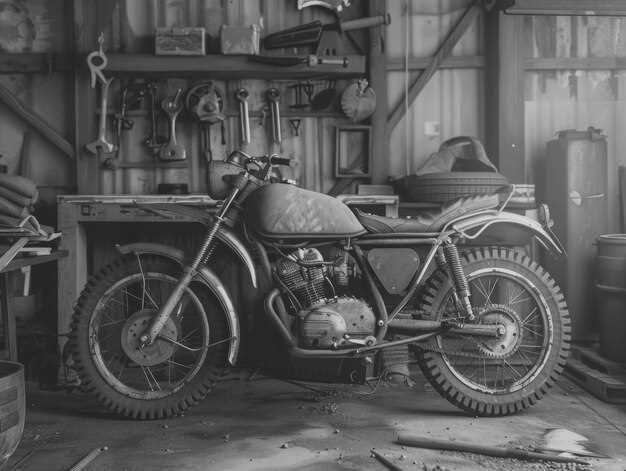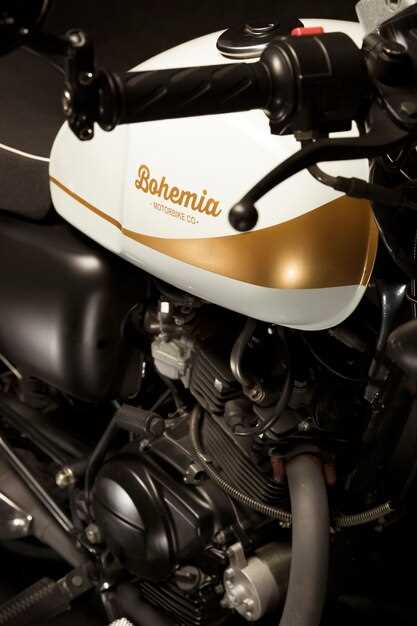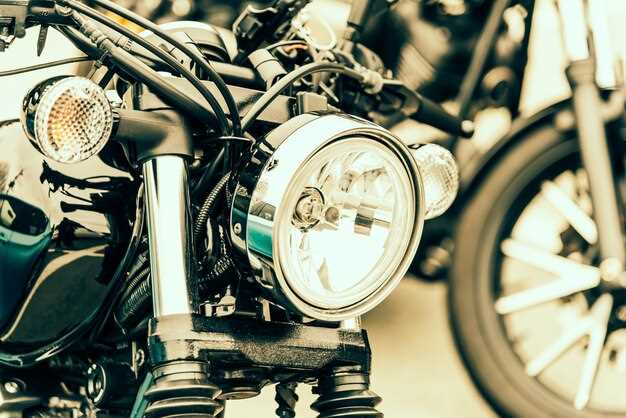
The story of American motorcycle brands is a rich tapestry woven with the threads of history, innovation, and the pursuit of freedom on two wheels. From the early days of motorized bicycles to the rise of iconic American manufacturers, the evolution of these classic brands reflects the changing landscape of American culture and technology. As we delve into this fascinating narrative, we will explore how these motorcycle brands have not only endured the test of time but have also shaped the very identity of motorcycling in the United States.
In the dawn of the 20th century, American ingenuity gave birth to some of the most renowned motorcycle brands, each with its own unique story and contribution to the industry. The classic models that emerged during this period laid the groundwork for future innovations, showcasing a blend of rugged design and engineering prowess. As we trace the timeline of these brands, we will uncover the challenges they faced, from economic downturns to fierce competition, and how they adapted to thrive in an ever-evolving market.
In this article, we will take a closer look at key players in the American motorcycle scene, highlighting the milestones that defined their histories and the legacy of craftsmanship they left behind. By understanding the roots of these prominent brands, we gain insight into the values they embody and the community they foster among motorcycle enthusiasts. Join us on this journey through time as we celebrate the enduring spirit of American motorcycle brands.
The Rise of Classic American Motorcycle Manufacturers
In the early 20th century, the American motorcycle industry experienced a remarkable surge, giving birth to several classic brands that would shape the future of motorcycling. Manufacturers such as Harley-Davidson and Indian emerged as pioneers, offering innovative designs and powerful engines that captivated riders across the nation.
Harley-Davidson, founded in 1903, quickly established itself as a symbol of freedom and adventure. Its V-twin engine, introduced in 1909, became the benchmark for performance and durability, setting Harley apart from its competitors. The brand’s image was further cemented during World War I, when the military utilized its motorcycles for reconnaissance and transportation, showcasing their reliability in challenging conditions.
Indian Motorcycle, established in 1901, was a formidable competitor to Harley-Davidson. Known for its distinctive designs and advanced engineering, Indian produced some of the fastest motorcycles of the era. The brand gained a loyal following in the 1920s, attracting racers and enthusiasts alike. Innovations such as the first production motorcycle with electric start and a successful racing pedigree helped solidify Indian’s legacy in American motorcycling history.
As the decades passed, these classic brands faced numerous challenges, including the Great Depression and increased competition from foreign manufacturers. However, their commitment to craftsmanship and the spirit of rebellion allowed them to endure and adapt. By the mid-20th century, both Harley-Davidson and Indian had become synonymous with American motorcycle culture, influencing lifestyle, fashion, and music.
The resurgence of interest in vintage motorcycles in the late 20th century revived the legacy of these classic brands. Enthusiasts began to appreciate the craftsmanship and design associated with early American motorcycles, prompting a renaissance in the industry. Today, Harley-Davidson and Indian continue to thrive, celebrating their heritage while embracing modern technologies to attract new generations of riders.
The rise of classic American motorcycle manufacturers is not just a tale of triumph; it is a testament to the enduring allure of motorcycles as symbols of freedom and individuality. These brands have paved the way for future innovations while holding steadfast to their rich histories, ensuring their place in the hearts of motorcycle enthusiasts worldwide.
Iconic Models That Shaped American Motorcycling

Throughout the history of American motorcycle brands, certain models have left an indelible mark on the landscape of motorcycling. These iconic motorcycles not only defined their respective eras but also influenced the culture and evolution of biking in the United States.
The Harley-Davidson Panhead, introduced in the late 1940s, is a prime example of a model that solidified Harley’s reputation. With its distinctive design and powerful engine, the Panhead became emblematic of the American spirit of freedom and rebellion. It played a significant role in the rise of motorcycle clubs and the biker lifestyle.
Another landmark model is the Indian Scout, first launched in 1920. The Scout garnered attention for its lightweight frame and excellent handling, making it popular amongst racers as well as everyday riders. It represented Indian Motorcycles’ commitment to performance and innovation, cementing its place in the history of American motorcycle brands.
The Triumph Bonneville, although a British model, had a considerable impact on the American motorcycle scene during the 1960s. Its styling and engineering influenced the design of many American bikes, while becoming a favorite among American riders, particularly in the burgeoning counterculture movement.
The Honda CB750, introduced in 1969, significantly shaped motorcycling by popularizing the four-cylinder engine in the American market. Its introduction marked a shift in consumer preferences, leading to an influx of Japanese motorcycles that would challenge the dominance of traditional American brands and alter the dynamics of the industry.
Lastly, the Victory High-Ball is a modern representation of American motorcycle engineering innovation. Launched in the early 2010s, the High-Ball combines retro styling with modern technology, appealing to a new generation of riders while paying homage to the classic aspects of American biking culture.
These models reflect the diverse history of American motorcycles, showcasing how brands have evolved while influencing riders’ experiences and preferences over the decades. Their legacies continue to resonate within the motorcycling community today.
The Evolution of Motorcycle Design from the 1900s to Today

The evolution of motorcycle design has been a fascinating journey, showcasing the advancements in technology and changes in consumer preferences over the decades. Starting in the early 1900s, motorcycles were primarily utilitarian machines, designed for simple transportation. Brands like Indian and Harley-Davidson emerged during this period, setting the groundwork for classic American motorcycles that are still revered today.
In the 1920s and 1930s, motorcycle design began to reflect a growing interest in speed and performance. Frames became more streamlined, and engines were enhanced to boost power. The introduction of the “cruiser” style by brands such as Harley-Davidson defined a new niche, appealing to riders seeking both comfort and style. The classic aesthetic of these motorcycles, characterized by wide handlebars and low-slung frames, became iconic.
The post-World War II era marked a significant shift. The 1950s and 1960s introduced a surge in popularity for motorcycles, largely influenced by pop culture and the rise of motorcycle clubs. Brands like Triumph and Honda entered the American market, redesigning motorcycles to be lighter and more agile. Sports models emerged, emphasizing speed and competition, as seen in the design of the Honda CB750, which combined power with innovative technology.
As environmental awareness grew in the late 20th century, manufacturers began to incorporate more efficient designs. The 1980s and 1990s brought the rise of sport bikes, characterized by their aggressive styling and performance-oriented features. Brands such as Kawasaki and Suzuki began to dominate this segment, attracting a younger demographic with increasingly powerful engines and cutting-edge technology.
In the 21st century, motorcycle design has shifted once again, focusing not only on performance but also on sustainability. Electric motorcycles, spearheaded by brands like Zero and Harley-Davidson’s LiveWire, represent a new frontier in design and functionality. Today’s motorcycles incorporate sleek, modern aesthetics along with smart technology, including connectivity features and advanced safety systems.
In summary, the evolution of motorcycle design reflects the dynamic relationship between technology, culture, and consumer desires. While classic motorcycles continue to captivate enthusiasts, modern innovations are paving the way for the future of riding.
